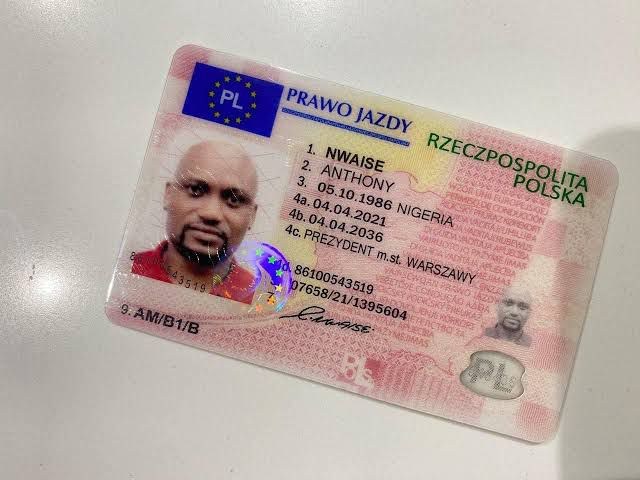Five Laws That Will Aid With The Driving License Learning Online Industry
Driving License Learning Online: A Comprehensive Guide
In today's fast-paced world, the requirement of having a driving license can not be underestimated. The age of digitalization has actually transformed the method people can prepare for their driving tests. Online learning platforms now provide a practical and reliable methods of obtaining essential knowledge and skills needed to pass the driving test. This post will look into the various elements of driving license learning online, including its benefits, how it works, and what to expect.
The Evolution of Driving License Education
Generally, acquiring a driving license involved going to physical classroom sessions along with behind-the-wheel training. Trainees had to handle traveling to classes and acquiring practical experience, which might be both lengthy and tough. Nevertheless, the intro of online learning has actually transformed this procedure, making it more available and versatile.
Benefits of Learning to Drive Online
Learning to drive online offers various advantages, including:
- Flexibility: Learners can prepare for their tests at their own rate and convenience, without the rigid scheduling generally connected with traditional classes.
- Cost-Effectiveness: Online courses typically come at a lower cost compared to in-person instruction, making it an attractive choice for numerous.
- Access to Resources: Comprehensive online courses often consist of simulations, tests, and training videos that enhance the learning experience.
- Updated Information: Online products are typically updated more regularly, guaranteeing learners get the most current details on traffic laws and guidelines.
- Self-Paced Learning: Students can evaluate areas they find challenging and progress through the product as they master each topic.
How Online Driving Education Works
Many online driving courses are structured to provide a comprehensive learning experience. Below are the normal elements of an online driving course:
1. Enlist in a Course
- Students select an online driving school that suits their requirements and register for a course.
2. Gain Access To Study Materials
- Upon registration, students access to a portal consisting of research study materials, consisting of multimedia material, practice tests, and resources on state-specific traffic laws.
3. Study and Complete Instructional Modules
- Courses are broken down into modules that learners should finish. Many platforms provide video lectures, interactive quizzes, and reading materials.
4. Take Practice Tests
- A lot of online learning platforms offer chances to take practice tests, mimicking the real written driving test. This assists trainees determine their readiness for the real exam.
5. Behind-the-Wheel Training
- While online courses concentrate on theoretical knowledge, trainees will still require practical driving practice. A lot of platforms recommend partnering with a knowledgeable driver or enrolling in a local driving school for hands-on training.
6. Schedule the Driving Exam
- Once trainees feel great in their knowledge and abilities, they can arrange a visit for the written and driving tests with their regional automobile department.
Table: Comparison of Online vs. Traditional Driving Learning
Function
Online Driving Courses
Standard Driving Schools
Flexibility
High (study at own pace)
Limited (set class schedule)
Cost
Normally lower
Normally higher
Learning Format
Self-directed multimedia
Instructor-led lectures
Research study Materials
Upgraded frequently
May not reflect the current laws
Behind-the-Wheel Guidance
Needs external arrangements
Consisted of in the package
What to Expect from Online Driving Courses
While each online driving course might differ, students can typically anticipate the following:
- Comprehensive Curriculum: Courses cover important topics such as traffic laws, road signs, safe driving practices, and protective driving methods.
- Interactive Learning: Many online courses carry out gamification strategies to make learning fun and engaging.
- Support: A reputable online driving school should provide access to instructors through email, chat, or phone for extra support.
Frequently Asked Questions (FAQs)
1. Is lowellmorel.top driving education recognized by all states?
While many states accept online driving courses for the composed part of the exam, regulations may vary when it comes to the behind-the-wheel training. It is important for trainees to verify their state's particular requirements.
2. Can I discover to drive without a physical class?
Yes, you can finish the theoretical part of driving education entirely online; however, practical driving lessons with an experienced adult or a licensed instructor are important.
3. Are online driving tests the very same as in-person tests?
The format of online practice tests often resembles the real tests, however they may not always be similar to the state-specific driving exams. Nevertheless, they serve to familiarize learners with the test structure and material.
4. Is online driving education suitable for any age groups?
Yes, online driving education is accessible and useful for students of all ages, whether young people preparing for their very first driving test or older grownups looking for to refresh their abilities.
5. What happens if I stop working the online practice tests?
Failing a practice test prevails and shouldn't dissuade learners. A lot of online courses enable unrestricted attempts to retake tests and tests up until a passing grade is achieved.
Learning to drive online provides a viable option for lots of people looking to get their driving license in a versatile and cost-efficient way. With the evolution of online education, individuals can now get ready for their driving tests with ease and confidence. As learners navigate this self-paced journey, they can gain from thorough resources, engaging content, and the benefit of managing their own schedules. Ultimately, whether picking online education or a standard approach, the key remains the commitment to safe driving practices and compliance with local policies.
